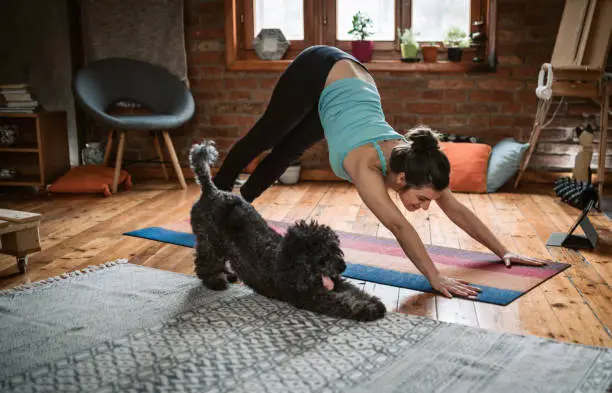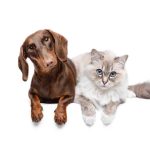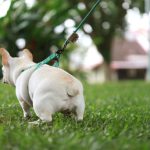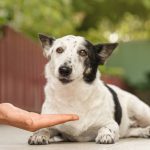Precision tools are needed for dog grooming. Hair clippers and trimmers, the silent symphony conductors of grooming, promise to turn scruffy fur into neat coats in various forms. These tools take one on a journey via buzzes and snips that sculpt fur and the appearance of one’s favorite pet.
Any grooming method relies on trimmers and clippers to modify a dog’s unruly coat. Without losing a dog’s spirit, they capture it in the fur that falls to the floor. Each lock of hair shows the careful care and meticulous attention done by the groomer.
Choosing the correct tool is crucial, like choosing a brush for canvas or a chisel for marble. The heft, grip, sound, and cut create an experience for the groomer and dog. The dog instinctively trusts the clippers’ hands, sensing the benign nature of the buzzing device that paradoxically frees it from its hair.
The world of clippers and trimmers loves details, valuing coat types and blade types. Blades can cut through dense undercoats like a ship cleaves waves or whisper through fine fur like the wind. Speed and precision create an exquisite ballet, with each movement measured and each pass intentional.
Trimmers finish the nooks and crevices clippers avoid. They work on delicate paws, eyes, and ears. Trimmers achieve detail and finesse that clippers cannot. They are the unsung grooming toolbox heroes, working quietly.
Hardware and experience in using grooming tools are equally important. Mastering these tools requires patience and technique, not force or speed. Each clipper swipe and trim is part of a choreography that takes into account each dog’s unique traits, from coat thickness to vibration and noise tolerance.
Lubrication and maintenance become hallowed rituals amid the mechanical buzz of grooming. Clippers and trimmers need oil and clean blades to last and work. This makes the attentive groomer part custodian and part craftsman, caring for their tools as well as their canines.
Going deeper into grooming, one may find cordless miracles that give movement and freedom. Their corded kin are unaffected by dwindling batteries and wield endless power. Their choice depends on personal desire and grooming style, each pebble affecting the larger grooming experience.

The whispers of fur that float to the ground, the clean lines that follow the dog’s anatomy, and the quiet satisfaction of a job well done measure a grooming session. Clippers and trimmers silently watch this transition but are crucial. Their care and compassion for the dog tame disarray and reveal beauty.
After grooming, the dog is transformed. The silent clippers and trimmers have contributed to this peaceful revolution and are resting until they are needed again to create beauty from the mundane. The memories of motion, fur, and growth are in their stillness.
The story of dog grooming clippers and trimmers celebrates the modest craftsmanship that polishes our pets and our ties with them. A well-groomed coat and a dog proudly showing off its care are valued in this world. It symbolizes the implicit pact between humans and dogs, which promises care in exchange for absolute loyalty.
Learning Dog Grooming with Clippers and Trimmers
Dog grooming goes beyond haircuts and trims. It’s a thorough ritual that shapes a pet’s appearance and health. Understanding, patience, and finesse are needed to use clippers and trimmers properly. Similar to an artist’s palette, the shades represent a dog’s coat’s textures and lengths.
Understanding the canine coat is crucial. Different breeds have thick, wiry, long, curly, double-coated, and other fur characteristics. Each variety requires a distinct grooming method, blade angle, and pace. This goes beyond aesthetics to knowing how near one can get to the skin without creating discomfort or irritation.
Grooming goes smoothly with proper preparation. Priming the dog’s coat before bathing is important. Clean hair cuts smoothly, uniformly, and with minimal tool and animal stress. If fur is air-dried or dried with a moderate blow-dryer, clippers glide smoothly, preventing snagging and pulling that can upset a dog.
A steady hand is needed to pick up clippers. Stability does not mean rigidity. A delicate pace of deliberate strokes follows the dog’s natural lines. Like sculpting, it reveals the medium’s shape. The motor buzzes softly while the fur is meticulously trimmed layer by layer to the desired length.
Adjusting to the dog’s responses is silent. A groomer must recognize subtle indications, including posture changes, ear flicks, and body tightness. This attention turns grooming into an empathy exercise. The best groomers groom with their emotions as well as their hands, honoring the animals’ trust.
Transitioning to trimmers changes concentration. Trimmers focus on minutiae, clippers on broad sweeps. Precision and delicacy are needed around the paws, ears, and face. Here, grooming is more about shaping a dog’s face and character than eliminating extra fur.

Grooming and tool maintenance are equally important. A lubricated blade is a courtesy to the next hairy client and a compliment to the craft. Sharp knives cut cleanly, but dull ones tug and shred fur, causing discomfort. Keeping the blades clean prevents residue and hair buildup from affecting their operation and spreading skin problems among dogs.
One size does not fit all dogs, and one grooming method cannot suit every breed or coat type. Huskies’ thick undercoats require a different approach than Yorkshire terriers’ smooth coats. The key is personalizing the grooming procedure, including clipper guard length, speed, and stroke direction to fit the fur grain or produce a specific style.
Groomers have a rhythm and pace, slower in delicate regions and more confident in thick, even fur. Grooming involves care, respect, and artistry to create a dog that looks nice and feels well in its skin and coat.
Grooming goes beyond transformation. The goal is to keep the dog healthy and comfortable. It teaches owners about regular grooming, between-session care, brushing, and coat upkeep. Maintaining the dog’s coat and health requires regular, cumulative treatments.
The end of a grooming session is the start of a dog’s new relationship with its body. A well-groomed dog is happy and moves freely without mats or snarls. It improves these dogs’ appearance and quality of life.










Leave a Reply